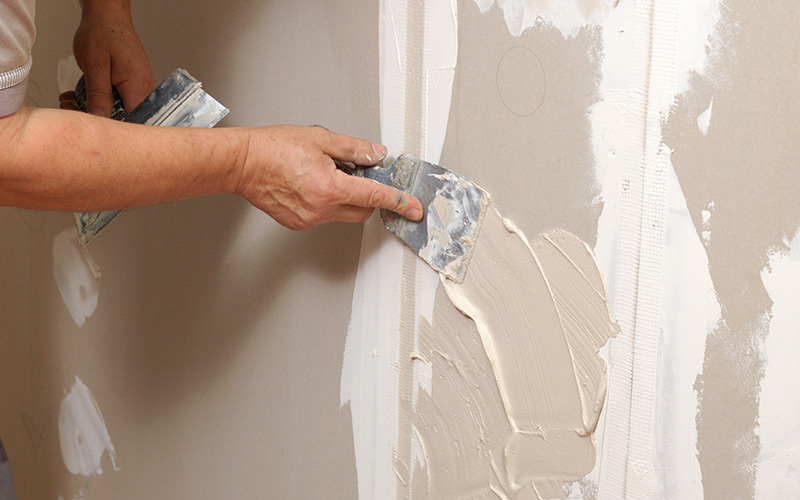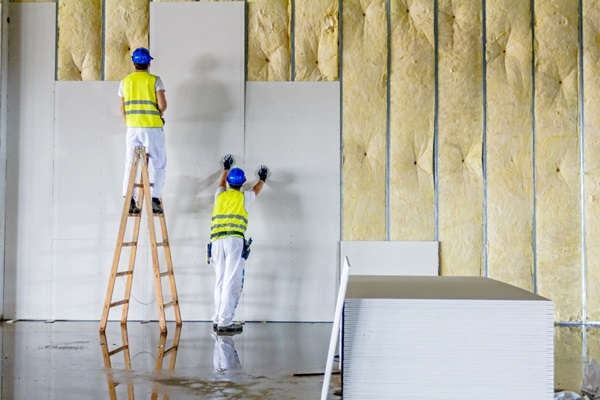Total Guide to Reliable and efficient Drywall Installation
Drywall setup is an essential element of any building and construction or remodelling task, requiring a careful approach to make sure both efficiency and reliability. It is necessary to check out the nuances of each step in the procedure, as they collectively contribute to the general success of the drywall installation.
Vital Devices for Drywalling
When starting a drywall setup task, having the right tools is critical for achieving an expert coating. Essential tools include a drywall knife, tape action, and a T-square, which are fundamental for accurate measurements and smooth cuts. A drywall lift is also extremely beneficial, particularly for ceiling setups, permitting for much easier handling of heavy panels.
For fastening the drywall, a cordless drill and drywall screws are needed. The drill must be outfitted with a drywall bit to make certain performance and accuracy. In addition, a vital tool is the drywall saw, which assists in reducing about various other barriers and electric outlets.

Furthermore, safety gear such as shatterproof glass and a dirt mask are essential to make sure individual safety during the installation procedure. Using the right tools not only enhances the quality of the installment yet also simplifies the operations, making the project more reliable general.
Preparing the Area

Following, examine the problem of the ceilings and wall surfaces. Fix any type of existing damages, such as holes, splits, or peeling paint, to make sure a smooth and even surface for drywall application. In addition, check for electric outlets, plumbing lines, and a/c air ducts, marking their areas to avoid difficulties during setup.
It is additionally essential to gauge the space precisely, determining the dimensions of the ceilings and wall surfaces to determine the ideal amount of drywall needed. Develop a detailed plan that includes the design and alignment of the drywall panels.
Installation Techniques
Reliable installment techniques are crucial for accomplishing an expert coating in drywall tasks. Proper measurement and cutting of drywall sheets are fundamental steps.
When hanging drywall, start from the top and work downward, guaranteeing that the long edge of the board is perpendicular to the framing. Secure the sheets with screws as opposed to nails, which provide greater holding power and decrease the risk of popping. Area see here screws every 12 inches along the sides and every 16 inches in the field of the board.
For edges, utilize corner beads to achieve sharp, clean sides. When setting up on ceilings, utilize a drywall lift or have a partner assist in holding the sheets in place (drywall repair). Preserve a gap of about 1/4 inch over the flooring and ceiling to fit expansion and tightening
Ending Up Touches

When the tape is in location, it's time to use the initial layer of joint substance, also known as mud. Make use of a 10 to 12-inch taping knife to spread out the compound equally over the taped seams, feathering the sides to mix with the surrounding drywall.
Permit the compound to completely dry thoroughly, normally 24 hr. After drying out, sand the surface area gently with fine-grit sandpaper to eliminate check my reference any kind of imperfections. drywall contractor. Repeat the mudding and sanding procedure, usually 2 to 3 coats, making sure each layer is flush and smooth with the drywall surface area
Common Errors to Stay Clear Of
Numerous do it yourself fanatics encounter mistakes throughout drywall installation that can jeopardize the results. One common error is stopping working to properly determine and reduce drywall sheets. Inaccurate cuts can result in spaces and irregular seams, making finishing much more labor-intensive. Furthermore, disregarding to startle joints can create weak factors in the wall surface, causing possible sagging or fracturing gradually.
An additional regular error is inappropriate attachment. Using as well couple of screws or nails can result in loose drywall, while overdriving fasteners can create the paper to tear, damaging the framework. It's critical to keep consistent spacing, generally every 16 inches, and to make certain that fasteners are flush with the surface area.
Furthermore, not attending to dampness concerns prior to installation can result in mold development and structural damage. Constantly examine the atmosphere and usage moisture-resistant drywall in high-humidity locations.
Final Thought
Trusted and effective drywall installation needs meticulous focus to detail throughout the procedure. By making use of crucial tools, preparing the room sufficiently, and sticking to best techniques in installation strategies, a perfect coating can be achieved. Furthermore, mindful application of joint compound and tape during the ending up phase improves durability and appearance. Staying clear of common errors better contributes to a specialist outcome, underscoring the relevance of accuracy and technique in effective drywall projects.
It is crucial to explore the nuances of each step in the process, as they collectively contribute to the general success of the drywall setup.When embarking on a drywall installment project, having the right tools is important for attaining an expert finish.For fastening the drywall, a cordless drill and drywall screws visit this site right here are necessary.Properly preparing the space is important for a successful drywall installation.Effective installation techniques are critical for achieving a professional surface in drywall jobs.